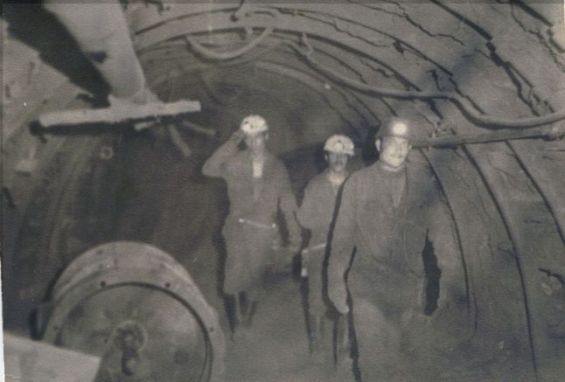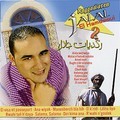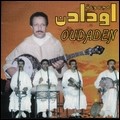Located in the Oriental region in northeastern Morocco, Jerada is a city that has been known for coal mining and extraction. For decades, it has provided a decent living for locals who primarily worked in the mines. The situation has changed 16 years ago, when the town’s mines were shut. A turning point in the history of Jerada, which had to bury on Monday two young brothers found dead in a clandestine mine, sparking tension and leading to a series of protests.
Starting from last Friday, the inhabitants of Jerada took the streets to denounce the situation in the city affected by unemployment and clandestine mines. This makes us recall the happier past of the Oriental city where one of the very first trade unions was created.
The Jerada Bassin
In fact, mineral extraction started in Jerada in 1927. According to the book «Coal Geology» (2002) by Larry D. Thomas, «Carboniferous black coals are found in the northeast of Morocco, at Jerada, and have been identified at depth beneath younger sediments at Ezzhiligia and Tindouf-Daraa». Indeed, the discovery of coal in the city came after a series of extensive research operations conducted by geologists from a Belgian company called «Ougré Marihay». Based on the account provided by Oujda city, a local online platform, in January 1927 «J. Horry was the first geologist to report the presence of coal in the Jerada Basin».
Mines in the city were officially exploited in 1934, according to Houssine Bernat, secretary general of the Moroccan Workers’ Union (UMT)’s regional bureau in Jerada. Speaking to Yabiladi, the trade unionist explained that inhabitants of the Oriental city, starting from the discovery of coal in the area, begun working in the mines. The hard conditions witnessed on site by these workers have pushed them to later consider joining trade unions present back then.
Miners and trade unions
«Under the French protectorate, the conditions in which the workers operated were hard and the extraction was done using primitive and traditional tools», Houssine indicated. Over the phone, he insisted on mentioning that in 1946, the city was hosting the first trade union congress organized under the patronage of the General Confederation of Labor (CGT), one of the major French trade unions.
This congress was a turning point in the history of labor unions in the country, according to Houssine Bernat. «Workers in Jerada inspired the rest of the country and for the first time Moroccans were able to create labor unions», he recalled insisting that «starting from the 1946 congress, a wave of leaders emerged in the city such a Taib Benbouazza, who participated in the foundation of the Moroccan Workers’ Union in 1955».
Jerada and the creation of UMT
The same account was confirmed by Maâti Mounjib, a historian who stressed the efficient role that the city and coal mining played in the country. «Jerada is known for being one of the first Moroccan cities to host a trade union», he told Yabiladi.
To give an example, Mounjib referred to Taib Benbouazza, founding father of the UMT. «One of the known trade unionists who operated in Jerada is Taib Benbouazza, he co-founded one of the oldest national trade union centers in Morocco», explained the historian.
More than that, Benbouazza who passed away in 2015 was elected secretary general of the union but, the elections were fraudulent and his position was taken by Mahjoub Bensedik who came second, added Mounjib.
A dramatic decline
However, the city that hosted one of the oldest labor unions and provided job opportunities for its inhabitants, knew a dramatic decline in 2001. «In 1998, the government decided to stop coal extraction in Jerada», said Houssine Bernat. According to the UMT trade unionist, the decision was a shock for the locals who were heavily relying on coal extraction. «The reasons officially given at the time by the authorities when the mines were shut suggest that coal mining became more expensive than importing it», declared Bernat who was not convinced with this justification.
In 2001, inhabitants of the mineral city were officially banned from extracting coal. Jerada, which used to be «boosting the national economy» has become a neglected town. A situation that Bernat denounced firmly. «Now youngsters are forced to work in clandestine mines to earn a living», he told Yabiladi.
«An average of 2 to 3 people dies every year because of clandestine coal mining. They work in primitive and hard conditions and this has been going on for many years».
They dig to live
Indeed, young unemployed people in the city go through a lot of hardship. Yabiladi spoke to Mehdy Mariouch, a photo reporter who had the chance to meet miners in the city of Jerada. «I visited Jerada in 2014 during a reportage I was working on at the time», he said adding : «to me it was a city very far away that I knew nothing about». During his trip to the northeastern town Mehdy had to photograph miners, a mission that turned quite special for him at the beginning.
«It was shocking for me at first glance, I went there with my camera and visited the mines. I met with the miners there who told me that they were desperate ; they told me that journalists and international reporters from big newspapers were there before me but nothing had been done to change their situation».
Mehdy explained that youngsters in Jerada dig to live. «They go everyday to these mines, dig sometimes down to 70 meters searching for the tectonic plates that contain anthracite», he said. Meeting these people has indeed marked the young photographer who was surprised by the amount of money they earn daily for such hard labor.
«For all that work, they can earn from 70 to 100 dirhams a day, which is not much. I took a photo of a miner who was reciting the Quran after emerging from a hole he dug, when I asked him why he said that surviving a mine is similar to resurrection».
According to Mehdy Mariouch’s account, youths in Jerada are divided in two categories, the ones who work in mines and others who go to an old abandoned coal plant in the region looking for scrap iron to cut and sell. Speaking to locals, Mehdy was convinced that these miners were not willing to leave their city, a city that proved generous and prosperous in the past.
The mineral city is now subject to tension. After the death of the two brothers, a ministerial delegation is expected to visit Jerada to investigate locally the situation.





 chargement...
chargement...













